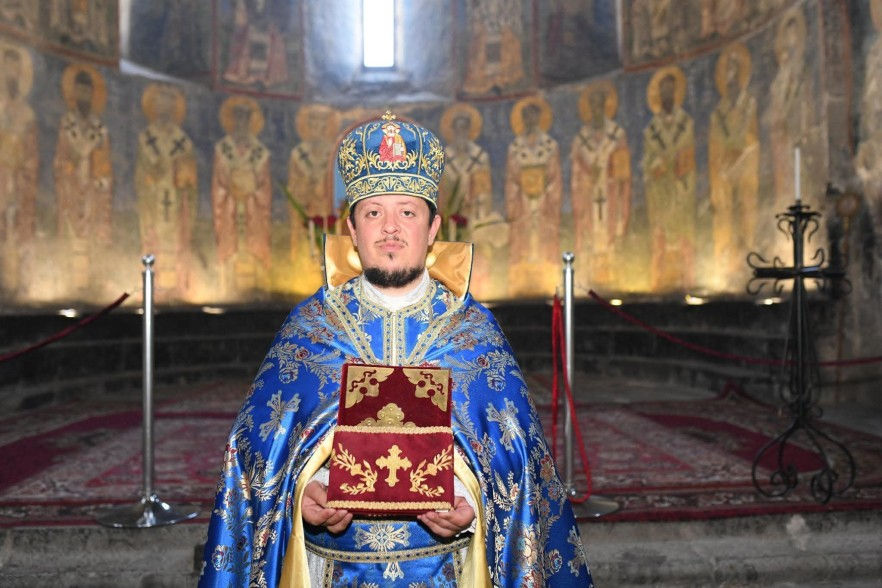Whoever says the church has not educated, let him look through the monastery records once. Father Hetum
- Armen Sukiasyan

- Jul 25
- 3 min read

Father Hetum Tarverdyan published a publication titled "The Church: Enemy of Education or the Last Barrier?"
"Today one can often hear the following statement:
"The Armenian Apostolic Church did not educate the Armenian people in the Middle Ages, but only prepared rulers."
And indeed, if we study our history only in the light of negative episodes: the expulsion of Khorenatsi, the rejection of Shirakatsi, the fate of Komitas, it may seem that the church was an enemy of education. But is this the whole truth? Or is it just a half-visible picture?
In the conditions of the political collapse of the homeland and the absence of an independent statehood, the church became the only stable system that had assumed not only a spiritual, but also an educational, cultural, and social role.
Historical facts that are often forgotten
Mesrop Mashtots, in the guise of a linguist, educator, and statesman, founded schools under the auspices of the church, from Artsakh to Mush. His students became the first teachers: Aghbianos, Hovsep Paghnatsi, and Hovhannes Yegeghetsatsi.
Gladzor University (founded around 1280) was a center of higher learning, where philology, philosophy, cosmology, music, and translations from Greek were taught.
Tatev University (founded 14th century, in Syunik) - an educational and philosophical authority where Grigor Tatev taught, teaching logic, rhetoric, and ethics.
The monastic schools of Sanahin, Haghpat, Sevan, and Sissak were centers of profound education and literary culture for their time. Around 60 manuscript libraries operated in the church schools of Cilicia alone.
David the Invincible, 6th-century philosopher, commentator on the nature of God and the world, and the first Armenian analyst of Aristotelian thought. His works were taught until the 18th century.
Nerses Shnorhali, Nerses Lambronatsi, Stepanos Orbelian, Hakob Sanahnetsi – all of them went through the church educational system, but worked in many fields: linguistics, translation, historiography, music, and correspondent diplomacy.
But why didn't a secular culture emerge?
Because in the Middle Ages, there was no Armenian statehood, no palace, no secular universities. Byzantium had an empire with an imperial library. Iran had shah halls, palace literary competitions. Armenia had a monastery.
And that monastery proofread manuscripts, collected books, preserved the language, educated priests, and made spiritual education the sole support of national identity.
And if you saw one more time, in that same monastery, a student wrote down "Sasna Tsrer", the last cry of the people that was passed down orally.
What about censorship?
Of course, censorship existed. But it was not just a phenomenon of the Armenian Church. Throughout the medieval world, religious institutions controlled freedom of thought. But even under those conditions, the Armenian Church never completely closed its doors to new thinking.
Ananias of Shirakatsi, mathematician, geographer, astronomer – wrote about the sphericity of the Earth back in the 7th century. What was his platform? Ecclesiastical school.
Grigor Tatev, a professor of ethics and philosophy, encouraged the involvement of reason in faith. This man had no king, no state. He had only a dilapidated monastery and a few disciples.
Not everything was always peaceful in the church. But it was always present. When the barbarian broke down the doors, when the king fled, when the priest and the pen were left alone, they became guardians. When the state did not educate, the church educated, at least within its borders.
And that priest who sat at night by the light of a candle transcribing Mashtots's writing may have been a master, but our writing was saved through his fingers. Our language passed through his lips. Our history remained in his memory.
"Whoever says the church has not educated them should look through the monastery's records once," Father Hetum noted.




















